Yore new LED controller(s) were designed to be versatile. Take the time to get to know them.
It's recommended that you try all of these things as you read through the documentation.
The system can be run off of any USB power supplies so long as they're rated to supply over 2 Amps of current. (See your manufacturers' documentation)
Additionally, if there's a a 120V outlet nearby, you can plug straight into the grid. Again, make sure the USB blocks and cables support over 2 Amps of output current.
To turn the controllers on, simply plug them in to a power supply and they will fire right up.
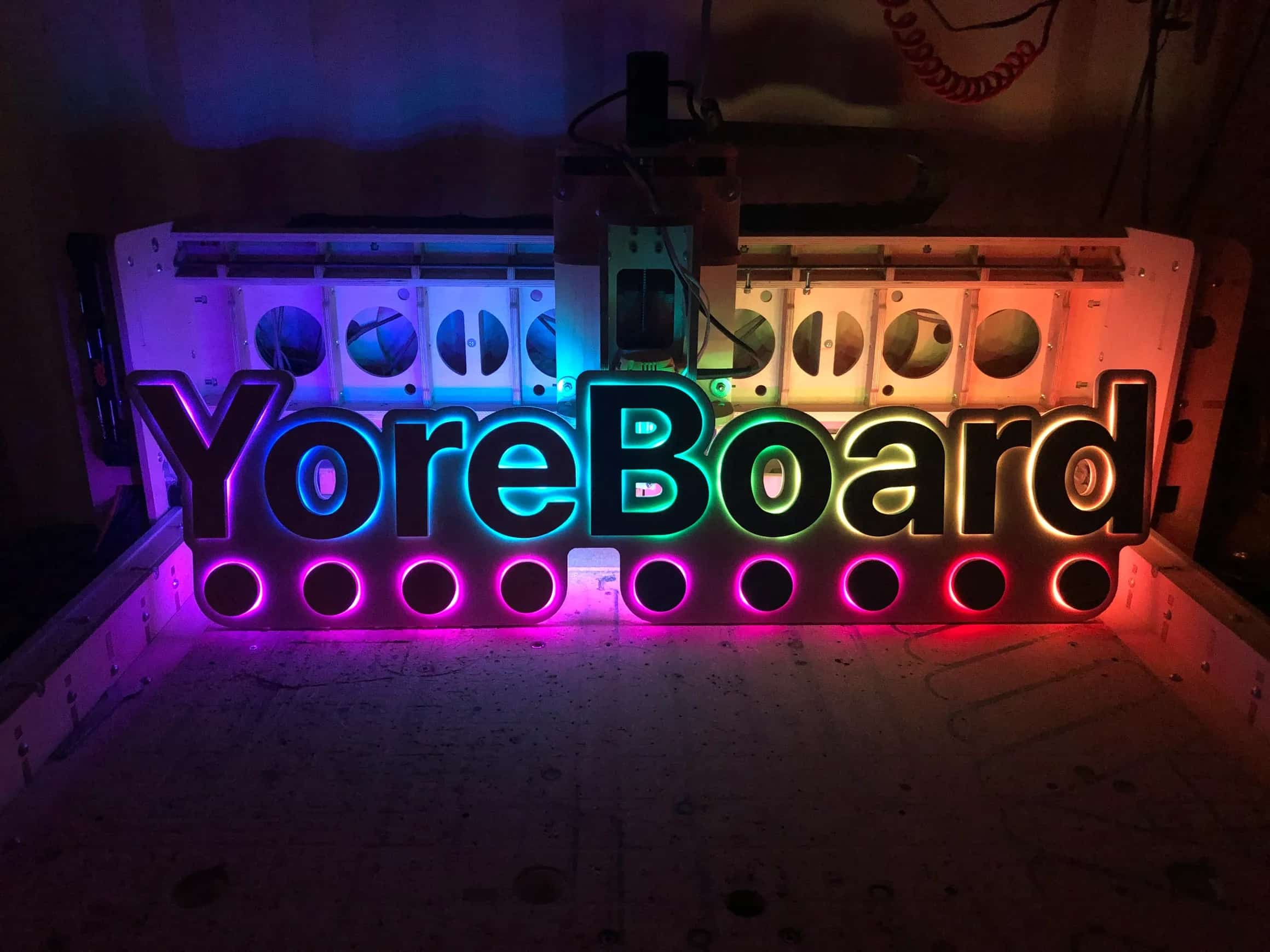

The system can be run off of any USB power supplies so long as they're rated to supply over 2 Amps of current. (See your manufacturers' documentation)
Additionally, if there's a a 120V outlet nearby, you can plug straight into the grid. Again, make sure the USB blocks and cables support over 2 Amps of output current.
To turn the controllers on, simply plug them in to a power supply and they will fire right up.
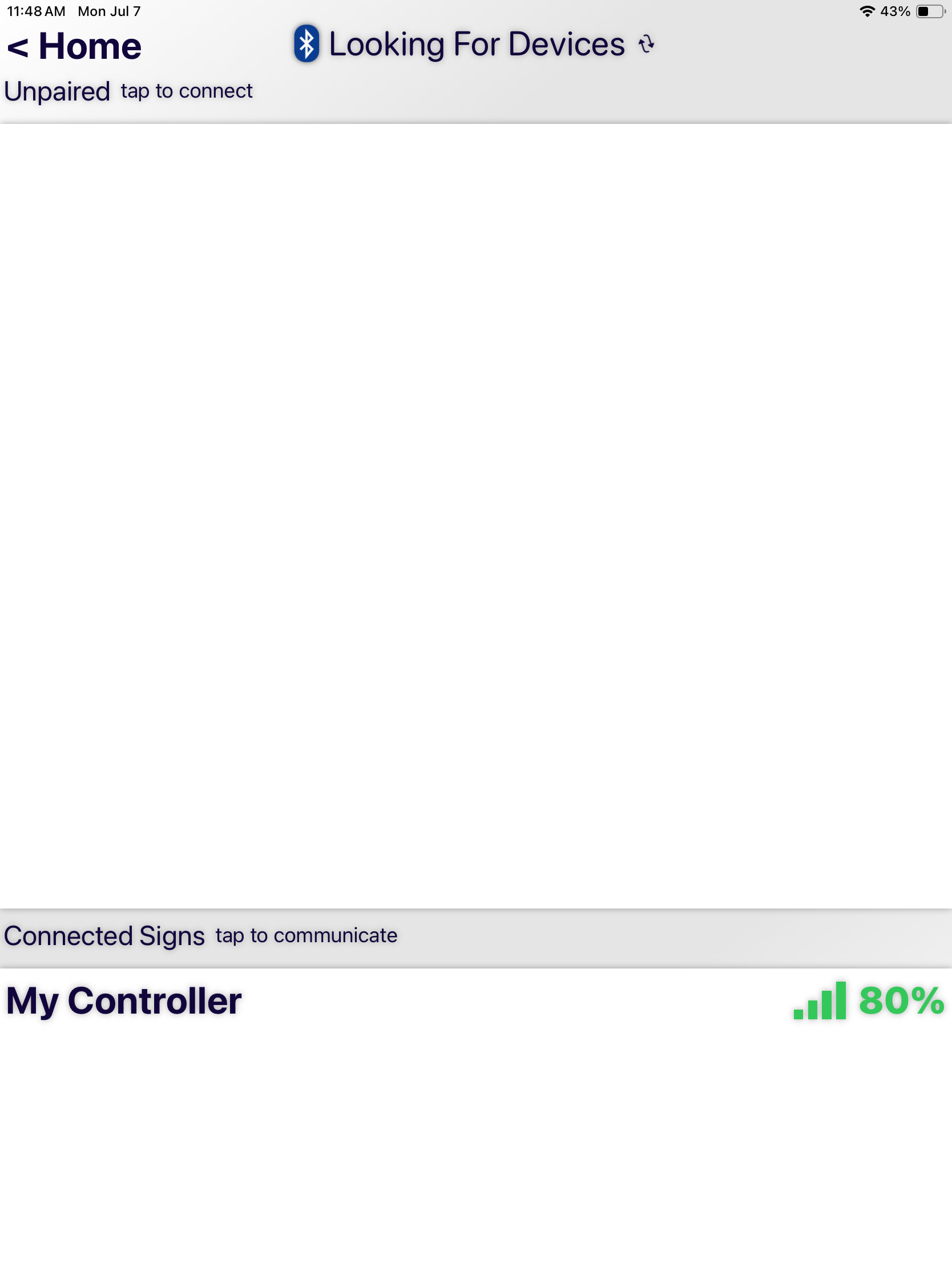
Download the YoreBoard app from the App Store or Google Play to get started.
Power on your controller(s) and launch the app.
When a connection to a controller is established, the LEDs will flash blue. Whenever a connection is lost, the LEDs will flash red.
*There's no need to open your phone's settings to pair with the controllers, but when the app asks for it, you will need to give the app the permissions that it requests in order to establish connections.
The connections screen shows you nearby YoreBoard devices that are waiting to be connected to as well as the devices to which you're already connected.
If you don't see anything listed, make sure they are powered on and that nobody else is connected to them. Then click the search/refresh button in the top right.
Simply tap one of the YoreBoards in the "Unpaired" list and wait for a connection to be established. (You can be connected to multiple controllers at the same time)
Once you've successfully connected to the controller(s), tap on the controller in the "Connected Signs" list and you'll be taken to the main menu.

Download the YoreBoard app from the App Store or Google Play to get started.
Power on your controller(s) and launch the app.
When a connection to a controller is established, the LEDs will flash blue. Whenever a connection is lost, the LEDs will flash red.
*There's no need to open your phone's settings to pair with the controllers, but when the app asks for it, you will need to give the app the permissions that it requests in order to establish connections.
The connections screen shows you nearby YoreBoard devices that are waiting to be connected to as well as the devices to which you're already connected.
If you don't see anything listed, make sure they are powered on and that nobody else is connected to them. Then click the search/refresh button in the top right.
Simply tap one of the YoreBoards in the "Unpaired" list and wait for a connection to be established. (You can be connected to multiple controllers at the same time)
Once you've successfully connected to the controller(s), tap on the controller in the "Connected Signs" list and you'll be taken to the main menu.
You can enter various customization menus like Colors, Brightness and Settings.
If you forget which controller you currently have open, tap Identify and the LEDs will light up. If you want to see details about the controller, tap on the signal strength in the top right.
If you want the controllers to respond to music, add some ambiance animations, or shut down, tap on the corresponding commands.
You can also open up this help documentation by tapping Help.
To disconnect, tap on the disconnect button.
If you're having serious issues, you can use the factory reset button to restore the controllers to factory settings. This will erase all of your settings though.
*Only use this as a last resort. Try restarting the system by unplugging the power and starting it back up.
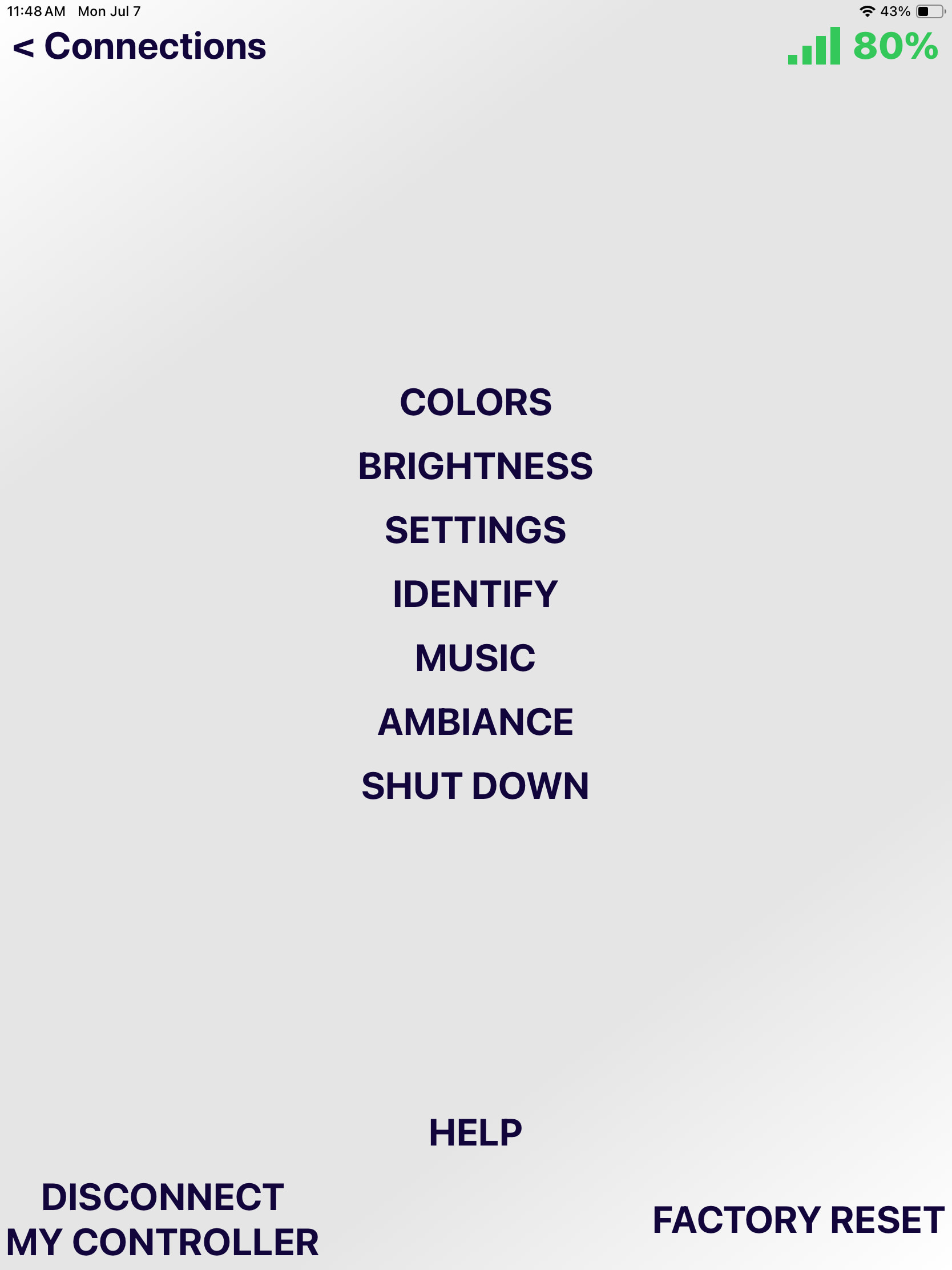

You can enter various customization menus like Colors, Brightness and Settings.
If you forget which controller you currently have open, tap Identify and the LEDs will light up. If you want to see details about the controller, tap on the signal strength in the top right.
If you want the controllers to respond to music, add some ambiance animations, or shut down, tap on the corresponding commands.
You can also open up this help documentation by tapping Help.
To disconnect, tap on the disconnect button.
If you're having serious issues, you can use the factory reset button to restore the controllers to factory settings. This will erase all of your settings though.
*Only use this as a last resort. Try restarting the system by unplugging the power and starting it back up.
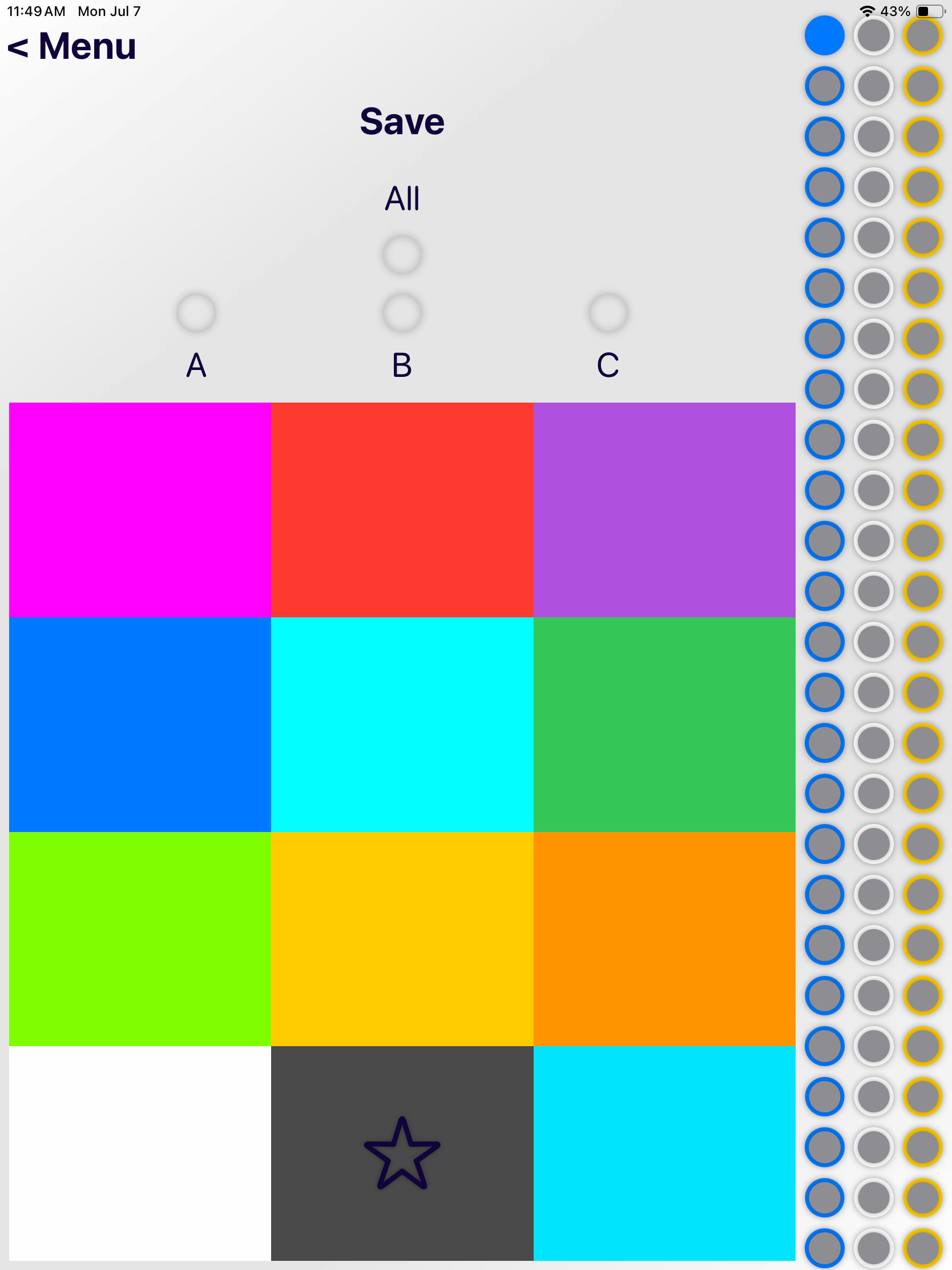
YoreBoard controllers give you full color customization.
You can set each LED's color individually if you'd like, or you can select a whole strand of LEDs to adjust at the same time.
To select a strand, tap on one of the radio buttons at the top of the screen.
You can also simply tap on an individual LED to set its color.
Once you've chosen the LEDs that you want to change, they will light up to give you a preview of their current color.
To change the color, simply tap on the desired color.
You can also create a custom color if the available colors just aren't quite perfect.
Finally, in the bottom right is the color swirl option. This will cycle through the spectrum and provide some pretty cool effects.
When you're done, don't forget to save your changes by tapping save at the top of the screen.

YoreBoard controllers give you full color customization.
You can set each LED's color individually if you'd like, or you can select a whole strand of LEDs to adjust at the same time.
To select a strand, tap on one of the radio buttons at the top of the screen.
You can also simply tap on an individual LED to set its color.
Once you've chosen the LEDs that you want to change, they will light up to give you a preview of their current color.
To change the color, simply tap on the desired color.
You can also create a custom color if the available colors just aren't quite perfect.
Finally, in the bottom right is the color swirl option. This will cycle through the spectrum and provide some pretty cool effects.
When you're done, don't forget to save your changes by tapping save at the top of the screen.
Depending on the the time of day and how well lit the area is, you may want to increase or decrease the brightness of your lights.
At night time, full brightness can be a little blinding. In the middle of the day, the sun can wash out the light and you'll need them to be a little brighter.
There are 3 brightness settings that you can tailor to your liking. The addressable LEDs and 2 optionally attached "dumb" LED outputs.
To adjust the brightness, simply move the sliders left or right and the brightness will be reflected within the app and on the LEDs.
*Another thing to consider is that if you're running the system off of batteries, turning down the brightness can increase the longevity of the batteries.
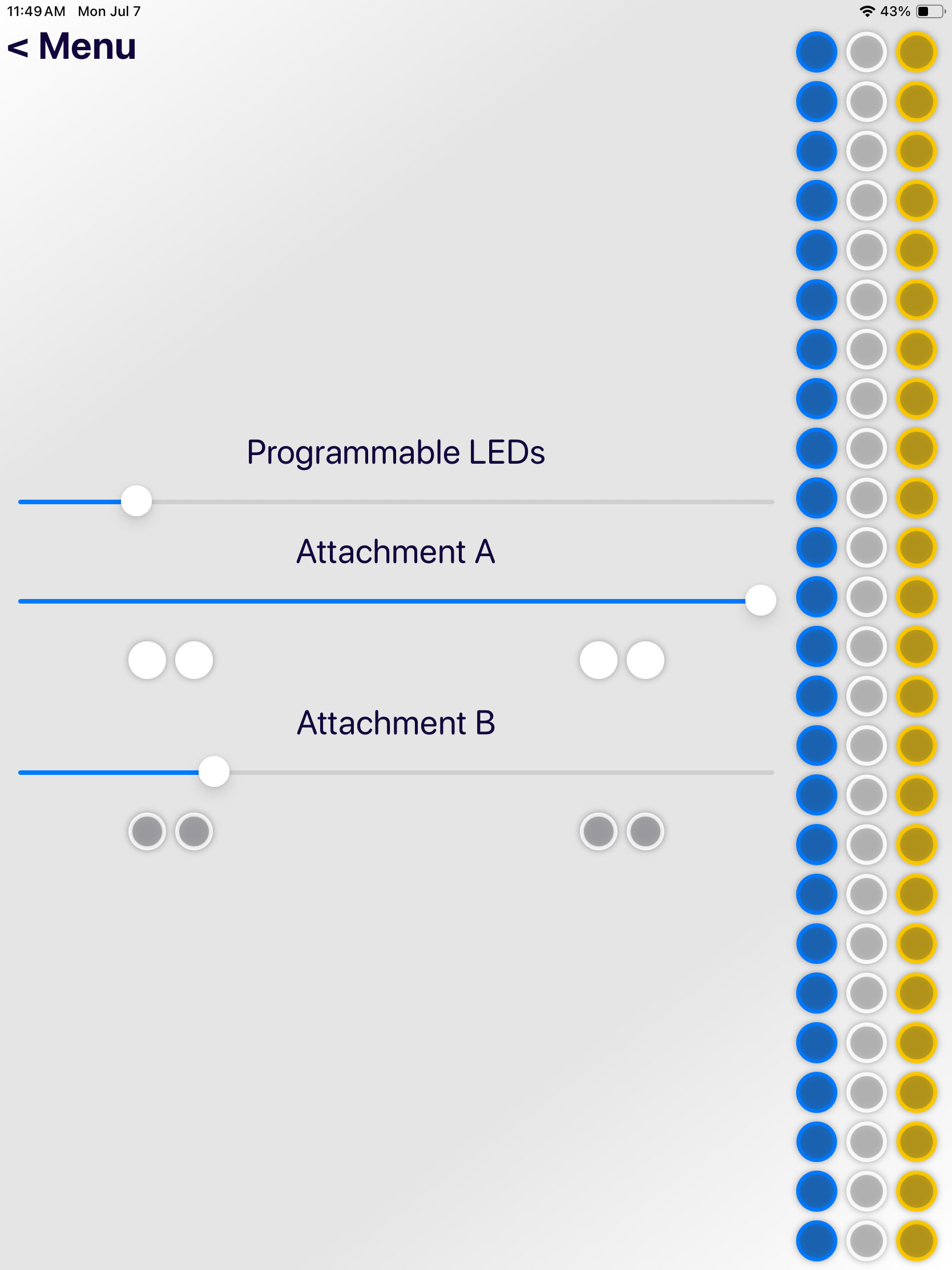

Depending on the the time of day and how well lit the area is, you may want to increase or decrease the brightness of your lights.
At night time, full brightness can be a little blinding. In the middle of the day, the sun can wash out the light and you'll need them to be a little brighter.
There are 3 brightness settings that you can tailor to your liking. The addressable LEDs and 2 optionally attached "dumb" LED outputs.
To adjust the brightness, simply move the sliders left or right and the brightness will be reflected within the app and on the LEDs.
*Another thing to consider is that if you're running the system off of batteries, turning down the brightness can increase the longevity of the batteries.

In order to make your new controllers perfect for you, they come with a lot of settings. Take the time to dial them in.
At the top of the settings screen, you can give your controller a name that\'s more meaningful to you than "Yoreboard XYZ". Hopefully there is something unique between the boards that you can use. If not, you can set their LEDs to different colors and use the colors to name the boards.
The settings are broken up into 5 sections. Basic, LEDs, Start-Up, In-App and Advanced. Simply tap on the section title (ex: "Basic") or the 3 dots to change the setting section.
The controllers will give you sound feedback for different commands and events. If you want them to be louder or you want to turn them off entirely, here's where you do it.
The controllers can support up to 3 addressable LED strands. Each strand can have up to 100 LEDs.
Here you can enable each strand and specify how many LEDs are in each one.
*Animations will adjust to the number of LEDs are expected in each strand. Let the system know how many they are by adjusting the count here.
Specify which ambiance display you'd like to start when the controllers are first fired up.
These are a combination of your account settings, stats and in-app settings. Since you're interested in the LED Controllers, a lot of this may not apply to you if you're not also using the app for scorekeeping.
If you're worried about others potentially connecting to your controller and tampering with your settings, you can protect the controller's setting with a PIN number.
To save a click, you can have the app automagically connect to the controller as soon as the app finds it.
If you don't want the app to play sounds, you can disable them here.
If you only ever want to connect to the controllers and go, you can have the app take you directly to the connections screen when you open the app.
Here, you can tailor the colors of the app to anything you like.
These are more settings that you can play with if you're feeling adventurous.
If you want to apply the same settings to other controllers, tap the "Apply All To..." Button.
*This requires the other controllers to also be connected to your app
Most settings have a question mark (?) next them to give you a quick reminder of what it does

In order to make your new controllers perfect for you, they come with a lot of settings. Take the time to dial them in.
At the top of the settings screen, you can give your controller a name that\'s more meaningful to you than "Yoreboard XYZ". Hopefully there is something unique between the boards that you can use. If not, you can set their LEDs to different colors and use the colors to name the boards.
The settings are broken up into 5 sections. Basic, LEDs, Start-Up, In-App and Advanced. Simply tap on the section title (ex: "Basic") or the 3 dots to change the setting section.
The controllers will give you sound feedback for different commands and events. If you want them to be louder or you want to turn them off entirely, here's where you do it.
The controllers can support up to 3 addressable LED strands. Each strand can have up to 100 LEDs.
Here you can enable each strand and specify how many LEDs are in each one.
*Animations will adjust to the number of LEDs are expected in each strand. Let the system know how many they are by adjusting the count here.
Specify which ambiance display you'd like to start when the controllers are first fired up.
These are a combination of your account settings, stats and in-app settings. Since you're interested in the LED Controllers, a lot of this may not apply to you if you're not also using the app for scorekeeping.
If you're worried about others potentially connecting to your controller and tampering with your settings, you can protect the controller's setting with a PIN number.
To save a click, you can have the app automagically connect to the controller as soon as the app finds it.
If you don't want the app to play sounds, you can disable them here.
If you only ever want to connect to the controllers and go, you can have the app take you directly to the connections screen when you open the app.
Here, you can tailor the colors of the app to anything you like.
These are more settings that you can play with if you're feeling adventurous.
If you want to apply the same settings to other controllers, tap the "Apply All To..." Button.
*This requires the other controllers to also be connected to your app
Most settings have a question mark (?) next them to give you a quick reminder of what it does
To turn them off, simply unplug the boards from their power supplies.
Don't forget to recharge your power supplies so that they're ready for you next time.
You can also utilize the shut down mode within the apps which turns off all of the lights and can save a lot of battery life.
*Do be aware that the system is still on and communicating though, so it will draw a small amount of energy.